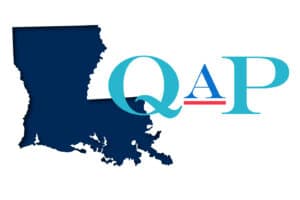In preparation for the 2020 update of our Qualified Allocation Plan (QAP) for Low Income Housing Tax Credits, Minnesota Housing has created a timeline for developing potential changes, clarifications, and enhancement to its QAP. The state is seeking feedback from stakeholders on several issues.
2020 QAP Timeline
- Present initial summary of potential proposed changes to Minnesota Housing’s January 2018 board meeting for initial discussion.
- Begin engagement opportunities with the development community and other partners in late January to early February, including an in-person QAP session to review the proposed changes and get feedback.
- Present proposed changes to the 2020 QAP to Minnesota Housing’s February 2018 board meeting.
- Open the formal public comment period in late February, culminating with the formal public hearing in early to mid-March.
- Minnesota Housing will review comments and finalize the 2020 QAP, Procedural Manual and Self-scoring Worksheet at the May 2018 board meeting.
2020 Areas of Review
Minnesota Housing staff identified the following areas as priorities for 2020 QAP review:
- Does the basis boost policy advance Minnesota Housing’s priorities?
- Should we adjust the tie breaker policy and how selection is determined if two or more proposals have an equal number of points?
- Should we increase the developer tax credit award limit? The maximum allowable amount of cumulative tax credits awarded to any one development was increased to $1.2 million in 2019 to adjust for inflation but no change was made to the maximum developer limit.
- Should the dollar amount of the rural development/small project pool be adjusted to account for inflation or other factors?
- How can we make sure that the requirements needed to meet the Planned Community Development strategic priority are clear and meet our intent?
- What additional requirements and/or guidance are needed for employers to support the Greater Minnesota Workforce Housing strategic priority?
- How do we evaluate and award point for preservation for properties that are RAD I projects?
- Can we create stronger incentives for responsibly inclusive tenant selection plans?
- Financial readiness:
- Should we consider an incentive focused on developments that minimize the total amount of the deferred gap request and tax credit allocation request?
- What clarifications are necessary in the definition of intermediary costs?
- Should we adjust the way that we look at unacceptable practices related to non-compliance with the Housing Tax Credit program, cost containment and transfer of ownership?
Submit Feedback and Suggestions for the 2020 QAP
If you have other policy areas you would like to see addressed, please email comments to tamara.wilson@state.mn.us by November 15, 2017.


